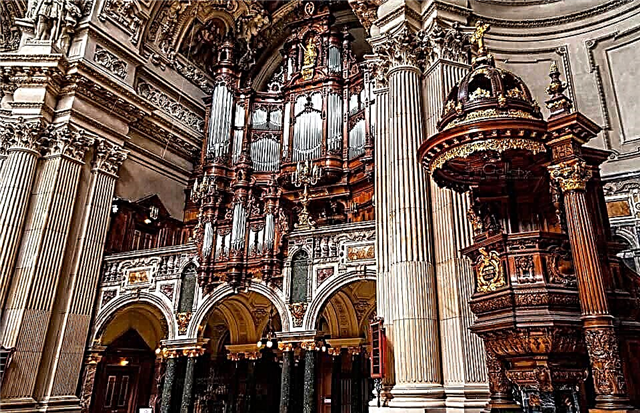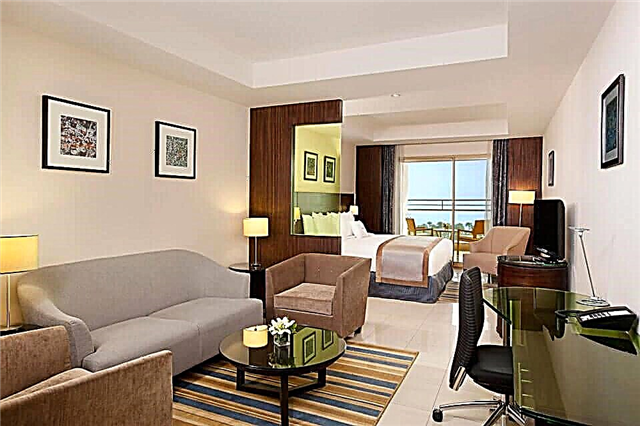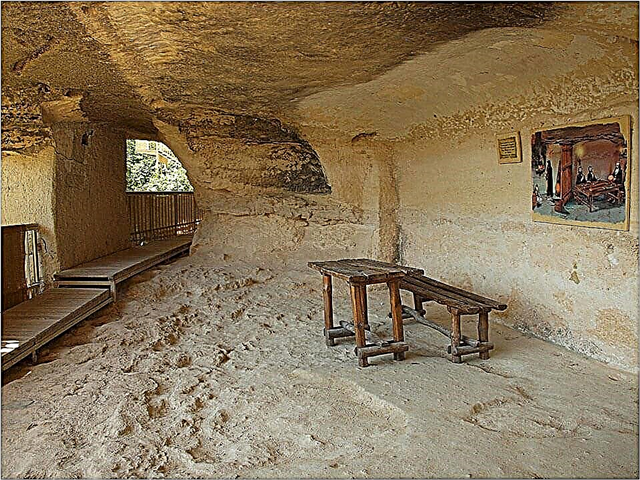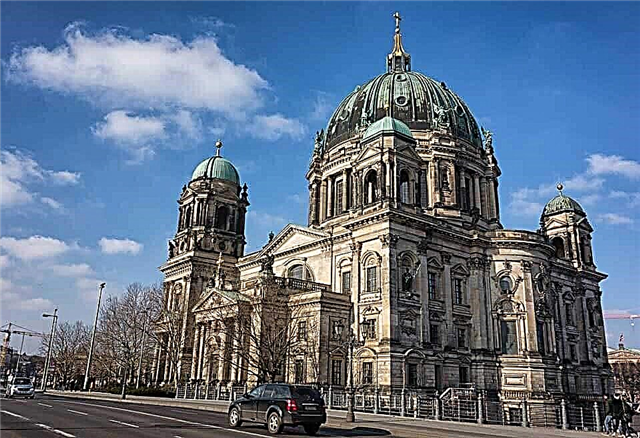The grandiose building, decorated with a huge dome, can be seen from afar. Berlin Cathedral (Berliner Dom) rises in the heart of the capital of Germany, next to the famous sights of the city. The richly decorated façade and impressive interiors are a real treat for the eyes. Built as a court church for the ruling Hohenzollern dynasty, this functioning temple is now a stronghold of the Protestant faith throughout Germany.
Construction history

The history of the Berlin Cathedral dates back to 1465, when the construction of a parish church began on the banks of the Spree River. At the beginning of the 19th century, Karl Friedrich Schinkel, a genius of German architecture, rebuilt the existing temple, creating a strict neoclassical building, characterized by simplicity of forms and minimalism. But at the turn of the century, the tastes of Germany's rulers changed.
Kaiser Frederick Wilhelm II decided that the rather modest Schinkel Cathedral no longer met the requirements of the monarchy and ordered the erection of a new luxurious structure, which, according to the ambitious emperor, was to become the main evangelical (Protestant) abode of Europe. The construction was entrusted to the architect and professor at the Technical University of Charlottenburg Julius Karl Rashdorf, whose project was approved by the King of Prussia. In 1893 the old building was demolished.

Construction of the new church, Berlin's answer to St. Peter's Basilica in Rome and St. Paul's Cathedral in London, began on June 17, 1894. Having allocated 11.5 million marks from the treasury, Wilhelm II hoped that the Hohenzollern court church would open its doors in 1900. However, the emperor's plans were not destined to come true - the Berlin Cathedral was consecrated only in February 1905. The height of the massive Baroque building with elements of the Italian Renaissance was 114 meters.
Post-war condition and restoration

During World War II, air raids severely damaged the building. The corner towers were covered with cracks, all the altar windows were knocked out. On May 24, 1944, an incendiary bomb hit the dome. The wood paneling ignited instantly. The arriving firefighters could not reach the source of the fire - the lantern crowning the structure fell into the interior and destroyed the floor, damaging the decoration and most of the Hohenzollern crypt.
After the split of Germany in 1949, the remains of the former architectural masterpiece ended up on the side belonging to the GDR. However, the authorities were in no hurry to restore the temple. Everything went to the fact that the stronghold of the Protestant faith awaited the fate of the Kaisers' palace located opposite, which was blown up in 1950. Until 1975, gloomy ruins with a steel frame instead of a dome were reflected in the waters of the nearby Spree. Only a few rooms were used by the parish and the theology department of Humboldt University.

Help came from ideological opponents - most of the funds for the restoration were provided by the government of the Federal Republic of Germany and the community of the Western Lutheran Church. The first service in the restored sanctuary, which turned out to be 16 meters lower than the previous one, took place in 1993. The gilded cross appeared on the dome only on August 19, 2008. 700 thousand euros were spent on its manufacture and construction. The remains of the old cross can be seen in the parish cemetery located on Liesenstrasse (Liesenstrasse).
Architectural features

Like all Baroque buildings, Berlin Cathedral is characterized by spatial scope, scale and desire for grandeur. The Silesian granite structure is square. Its height after reconstruction is 98 m. A staircase leads to the main entrance. Above it is an arched portal, in the center of which a painting depicting the appearance of Jesus attracts attention. Even higher are the cross and the statue of the Savior, blessing the parishioners with a gesture.
On the sides of the facade, which is replete with many bas-reliefs, balustrades, columns and statues, there are two small chapels. They are decorated with pediments, sculptures of the apostles and topped with domes. In the northwest tower there is a three-voiced bell, consisting of three bells of different sizes. The largest of them - New Vilsnak - weighs three tons. It was cast in 1929 and is an exact replica of its predecessor, created in 1471 and crashed in 1921.

A majestic dome with a diameter of 33 m and a height of 74.8 m around the entire perimeter is surrounded by a side, on which angels looking at the sky are located at the same distance from each other. Their copper figures were installed between 1978 and 1981. The lantern on the dome is crowned with a cross. To cover it, 1.5 kg of gold were spent. Those of you who are not intimidated by the 270 steps can climb to the observation deck located on the dome gallery and enjoy views of the Museum Island, Gendarmenmarkt, Reichstag and Red Town Hall.
Interiors

Unlike other Protestant churches, which feature simplicity and modesty of design, the interiors of Berlin's main cathedral are striking in luxury and magnificent decoration. The main part of the inner space is occupied by parishioners' benches, designed for 1,650 visitors. Light enters the church through stained glass windows. Many of them are decorated with images of scenes from the New Testament by the German painter Anton von Werner. Additional lighting is provided by candelabra-shaped luminaires.
Opposite the entrance is the central part of the cathedral - the altar zone raised by a five-step staircase. The sanctuary of white marble and onyx was created in 1850 by the Prussian architect Friedrich August Stühler and moved to the Berlin Cathedral from the church destroyed in 1893. Behind the altar rises the gilded Apostolic Gate, framed on both sides by massive cast-iron candelabra. Behind them is a white baptismal font.
Nearby is a wooden pulpit decorated with carvings and crowned with a golden cross, designed by Otto Rashdorf, the son and associate of the architect of the cathedral. The noble oak is engraved with the saying "The word of the Lord abides forever." The walls are covered with bas-reliefs, paintings, mosaics and quotes from the Holy Scriptures. At the base of the dome is an image of the symbol of the Holy Spirit - a dove filled with light.

A musical masterpiece on the left side of the temple attracts attention - a neo-baroque organ with 7,269 pipes and 113 registers supported by marble support columns. Its author is the brilliant master Wilhelm Sauer. The solemn sounds of the instrument, mesmerizing with its versatility of timbres, were first announced by the Berlin Cathedral in 1905. Opposite the Sauer organ is a simple vaulted entrance to a small wedding and christening hall. Its main decoration is the painting "Outpouring of the Holy Spirit", painted in 1820 by Carl Begas, and is one of the most important works of art in the cathedral.
Cathedral as the burial vault of the Hohenzollerns

The main court church of the ancient Hohenzollern family also serves as a burial vault for members of the Franconian branch of the German princely and imperial dynasty, which already owned estates in Swabia in the 11th century. In the niches of the cathedral nave, behind bars, there are luxurious sarcophagi shining with gold of the Elector of Brandenburg Friedrich Wilhelm and his wife Dorothea, as well as the tombs by Andreas Schlüter, in which the first king of Prussia Frederick I and Sophia Charlotte, the beloved wife of the great Kaiser, found their last refuge.
Going down to the crypt of the cathedral, you will find a vaulted room illuminated by subdued light. Silence always reigns in it. 90 representatives of the monarchical family are buried here. All styles of art, from late Gothic to romanticism, are reflected in sarcophagi and coffins made of stone, metal and wood. The oldest burial site dates back to 1499.The last member of the imperial family, buried in the crypt in 1915, was the daughter of Prince Adalbert of Prussia, who lived only a few days after birth.
Opening hours and ticket prices

You can visit the Berliner Dom from Monday to Saturday from 9:00 to 20:00, on holidays and Sunday from 12:00 to 20:00. Last visit is no later than 19:00. During the winter season (from 01.10 to 31.03) the opening hours are reduced by one hour. The temple is active and closes for tourists with the beginning of services. However, you can visit it as a parishioner. Don't be surprised if you see a lady dressed in a cassock at the altar. Protestantism favors the ordination of women.
Service Schedule:
- Sunday and holidays at 10:00 and 18:00 - sermon
- Saturday at 18:00 - Vespers
- Monday - Saturday at 12:00 - afternoon prayer
- Monday - Friday at 18:00 - evening prayer
The daily expenses of the cathedral are around 15,000 euros. Since the state covers these costs only by 1/3, the entrance for excursionists is paid:
- € 7 - for adults
- € 5 - for pupils, students, unemployed, disabled people, pensioners and groups of 20 people or more
The excursion program starts every 20 minutes, included in the price. You can also use the Russian-speaking audio guide service (€ 4). Berlin Cathedral is a Christian denomination, so do not forget about the basic rules of conduct: do not talk loudly and do not wear provocative clothes.
Where is it located and how to get there
Berliner Dom is located on the Museum Island near one of the most famous squares of the metropolis - Alexanderplatz. Address: Am Lustgarten, 10178 Berlin. You can get here:
- by bus: TXL - to the Spandauer Str./Marienkirche stop, 100 and 200 - to Lustgarten
- by subway (U-Bahn): U2, 5, 8 - to Alexanderplatz
- by tram: M4, 5, 6 - to Spandauer Str./Marienkirche
- by train (S-Bahn): S3, 5, 7, 9 - to Hackescher Markt
When planning a visit to the city's main church, take some free time to stroll through the Lustgarten (garden of delight), a park founded in 1573. At that time, its territory was used for the cultivation of fruits and herbs, and in 1643 an ornamental garden was laid out here.
Now Lustgarten is one of the most popular meeting places for residents of the capital. The biggest attraction of the green lawn with a fountain is the 70-ton granite bowl made from a single piece of stone. Due to its size and shape, the townspeople call it the "Big Berlin Soup Plate".











